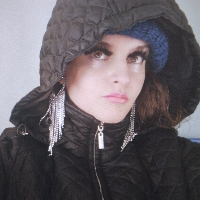Fashion Of The Future: How AI Will Design New Styles
As you can see in this technologically advanced dress from Paris Fashion Week, the daydreams of futuristic fantasy are over with motion-reactive textiles. A wearable technology brand called Cute Circuit helped design fabrics like this K Dress for us to experience unique interactive fashion.

Today there are already Tiny Micro LED lights embedded in dresses like this one, that change their color and will respond to your body's expression in movement. E-textile smart wear will continue to transform in the future and become more adaptable for any wearer.
A big way smart wear will progress is in fiber optics telecommunication, leading to next-generation nano textiles for data displays and recordings. According to Hong Kong Polytechnic University, Fiber Optic wearables will enable wearers' advanced forms of communication, and many conversations will occur over displays overlaid in front of them.
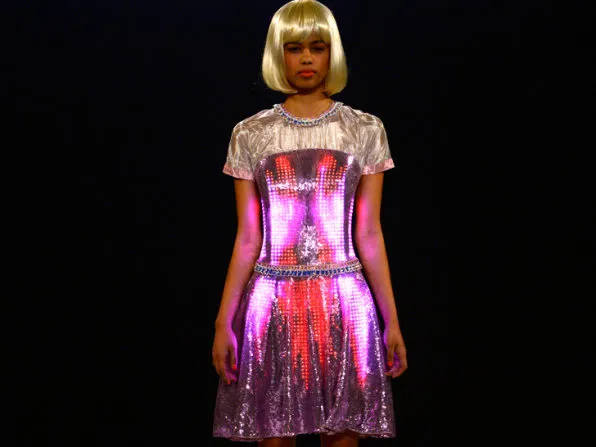
It allows for augmented reality types of communications that even the VR gaming industry is capitalizing on. The combination of nanophotonics combined with advanced forms of holography will allow for 3D images to be overlaid in front of users' embedded applications from their smart clothes.
The potential is advancing every year in optoelectronics and even the Journal of Materials Chemistry has published an issue that includes the future of our functional wear and advances in electro-optics.
There will be strong integration of electro-optical engineering with fiber photonics enabling new forms of telecommunications within next-generation smart textiles. Not only will visions be enhanced because of advances in engineering of material sciences, but because of advances in additive manufacturing.
AI will aid in the advancements of smart wear with the help of next-generation textiles with the help of fiber photonics, nano wear, electro-optical engineering, and the integration of graphene fibers for next-level smart clothes.
Picture a student named Megan going back to school but does not want to spend a lot of shopping. She can be more practical and thrifty online by following futuristic trends that help her save money. Megan decides to invest in just a few outfits when she goes online. The website shows her how 1 outfit can look like 5 as it changes its patterns or colors.
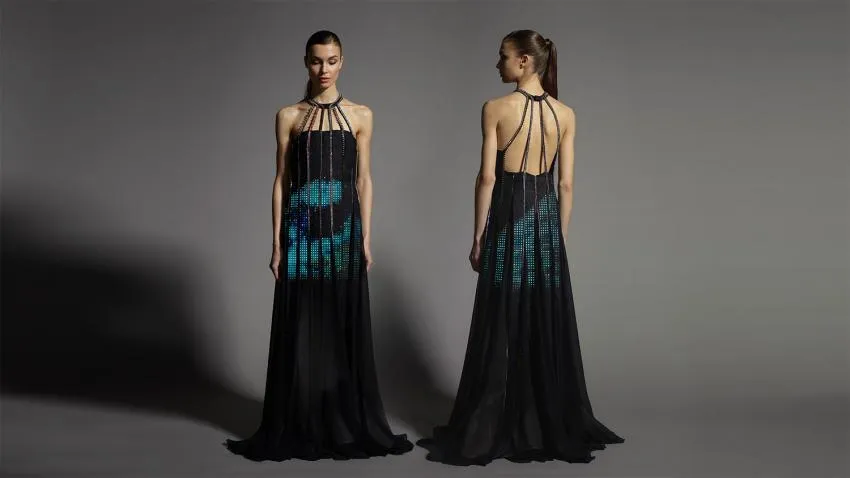
Megan's mind is put at ease as she realizes she can pay for the amount of one design and choose from a variety of styles offered on that companies website. This can be achieved with color-changing textiles and embedded LED lighting.
The company Cute Circuit has patented customization in this type of shopping that allows us to buy one dress with many patterns. Another brand to shop at when considering color-changing wearables is Twentyfour15.
A color-changing backpack known to be the company's signature wearable rucksack is a big feature during back to school. The rucksack is also made with a fiber optic panel enabling easy telecommunication between this bag and other devices.

Take a look at The Climate Dress by a Danish company called Diffus. It is a new interactive dress that made its premiere during a global conference on climate change and showcased the importance of performance wear. Climate change is a global problem and CO2 is a growing problem all over this world.
This interactive wearable raises awareness of climate change from increasing levels of carbon dioxide, and we should all take part as global citizens against climate chaos. We do, After all, share the world as cohabitors and we need to come together from all corners to do our share.
Designers are now starting to do their fair share in raising awareness with a new wearable tech known as the climate dress. A CO2 sensor and a tiny microprocessor are also embedded within this wearable as it monitors pollutants.
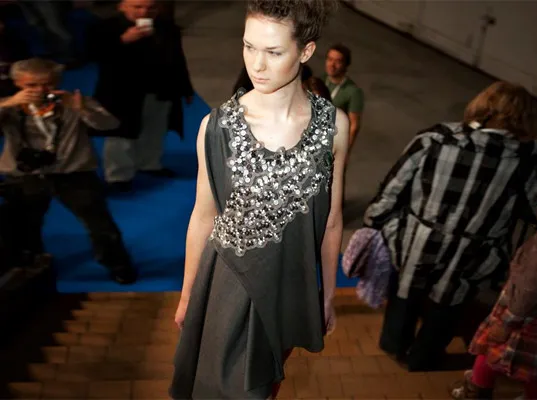
The LED lights light up whenever it detects the increase of CO2 and translates into different and alternating light patterns. There are Irregular light flickerings when levels are rising and smart wear like this one will help us determine which areas are unhealthy to live in. Many other smart wears are also integrated with biosurveillance sensors to help us better protect ourselves while surveying our environments.
Climate change is not the only concern but also our health as we breathe in elevated amounts of carbon dioxide. Increasing levels of carbon dioxide indoors are also bad for cognitive abilities, poor sleeping, and good job performance.
According to the G20 Energy Efficiency Action Plan, carbon dioxide and black carbons are a large portion of climate change and pollutants in the air. The plan also states that continued exposure to air pollution adds to a higher risk of cardiopulmonary disease, asthma, lung cancer, and heart attacks.
Taking a proactive approach towards pollution and knowing how to protect ourselves will prevent many dysfunctions that already affect many suffering from respiratory effects of pollutants. According to the University of Genoa, Electrospun nanofibers implemented with cyclodextrin acts as a wonderful air filter and will change functional wear as we know it.
The Aegis jacket is a great alternative to the everyday clothes of today in how it lets out oxidizers to purify the air we breathe. If you want the best wearable air purifier, embedded nanocapsules create the greatest functional wear in any environment. The Johannes Gutenberg University along with the Max Planck Institute for polymer research, prove in their research that they can release many kinds of therapeutic agents out into any environment to dispel toxins.
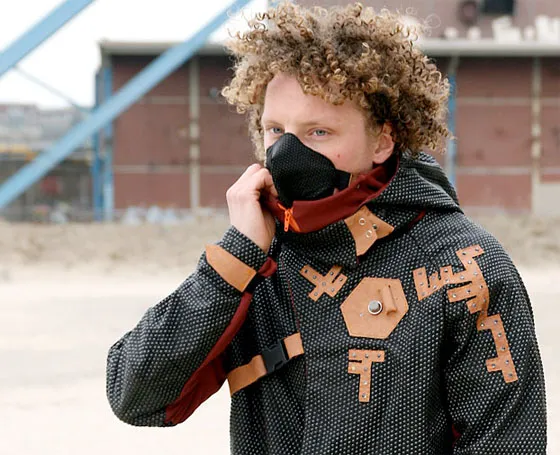
Take a look at the current opinion on climate change from a recent journal in pulmonary medicine on 2 of the major changes it causes. There is first global warming then there are changes in our weather patterns.
Poor air quality is a direct result along with increases in respiratory problems. Respiratory issues include anything from bad allergies to eventual lung disease or even COPD. We owe it to ourselves to take back the beautiful world we have and purify our air quality any way we can.
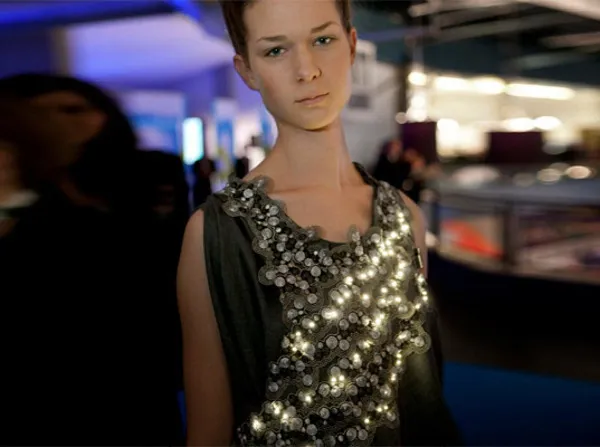
Berkeley School of Information had conducted a project back in 2016 on the possibilities of smart threads and their unique color. The fabrics are conductive and Thermochromatic paints are coated on top of them, while colors change when electricity is applied.
Check out this picture on fabric technology called Ebb.
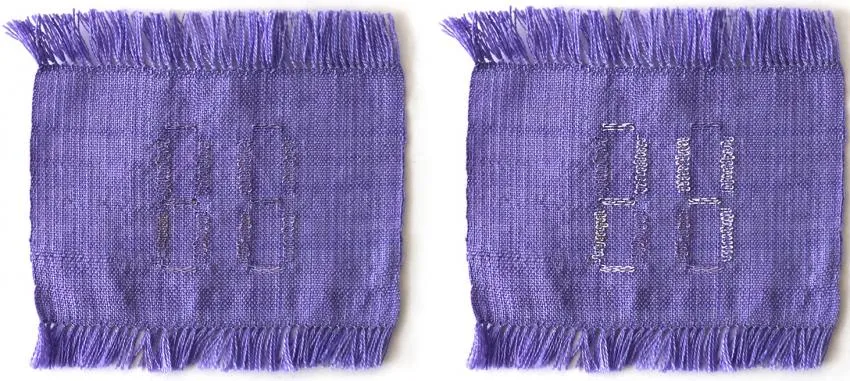
The hug shirt is interactive smart wear many of us can use to telecommunicate from long distances away. This can be due to business reasons or time away at universities.
Telecommunication technology allows faster communication on a global scale. It is increasingly a globalized world in which friends and family live in different time zones, so reaching them through new methods like a smart shirt makes the world that much smaller.
Wearable technology in a dress or shirt will bring us together via touch telecommunication. MIT research dominated a project on haptic touch with virtual software according to which the New kinesthetic communication will give us all the ability to empathize and sense others over long distances.

Different social networks are coming in which everyone will meet up online through virtual reality. Here is some research on the new communicative platforms fabrics are taking us to.
An Amazing time is coming for the fashion industry with new emerging technologies which will give customers better-customized fabrics. Compare this research to others and you will see that they all show how smart textiles will greatly improve a wearer's performance. The best Integration of AI for great sensory interactions of all kinds is coming because of the combination of technology and textiles in fabrics.
There will also be much versatility in smart-wear fashion, and wearers of all shapes and sizes will interact with the help of sensory embedded fabrics and these industry-changing smart textiles. Smart clothes will help inspire us all because they can even offer better health for all ages while our vital signs are monitored and solutions are given.
According to industry experts working at markets and markets an industry consulting firm, this market will continue to grow and reach 5.3 billion by 2024. Check out this video below on how smart textiles will provide variety in applications for many industries.
Technology will help make the fashion industry more sustainable and 75% of retailers have plans to invest in AI because of how it will better the environment. Digital clothing is a growing trend because of advancements in the fashion industry and because of how AI is already starting to change manufacturing, production, and design in creative ways.
New research shows the art of AI advancement has turned into a profitable science with inventions such as cognitive computing, a new computational method, which will forecast what is most popular in fashion using algorithms that will also design the clothes.
Ever since 2018 machine learning has been on the rise helping brands expand their profits and reduce manufacturing waste. Look at this photo below and see how fashion industries will completely change how fashion is seen today.
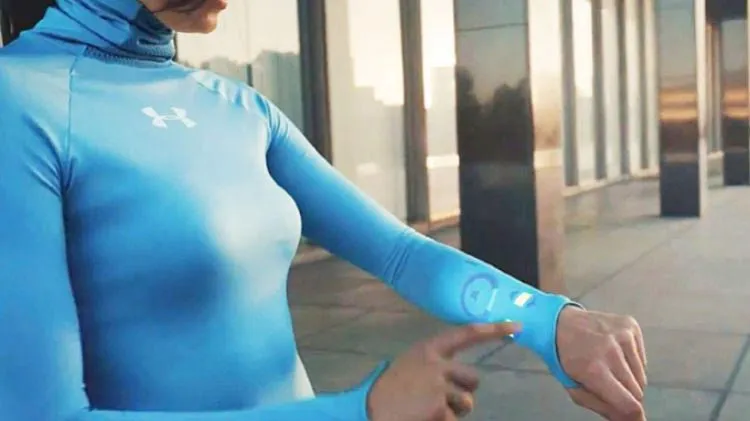
Additional research shows how smart tech will change human communications and all high-tech clothing and wearables. Smart textiles are also key in developments of smart clothing that have anything from insertable LED lights, fiber optic strands in smart shirts, or motion sensors that do many things including telling someone their heart condition.
Smart clothing will also be embedded with graphene nanoparticles inside microscopic sensors. Graphene tech with e-textiles will be at the forefront of smart manufacturing and will have the latest techniques in implementing smart textiles into many clothing companies.
Another impressive biomaterial will be smart polymers to aid the biomedical field in cell therapies. Research has shown that their best use is in personalized medicine because of the way these soft materials react to an individual's biology. The smart clothes they will be implemented in will change the way medicine has always been done.
The Vollebak graphene jacket is also a unique product that shields the elements from an overly hot or cold day. Furthermore, Vollebak is a product that is excellent in a world now so unpredictable and is made from graphene to protect from all the elements. It also conducts heat to stay warm in the coldest weather.
A fabric company known as Nanobionic Clothing aids the body in the prevention of diseases and prevents oxidative stress. Research on personal protective clothing proves very adequate by preventing viruses of today or any fatal injuries that may happen on the job. Check out this smart product below and see how well it adapts to the environment.
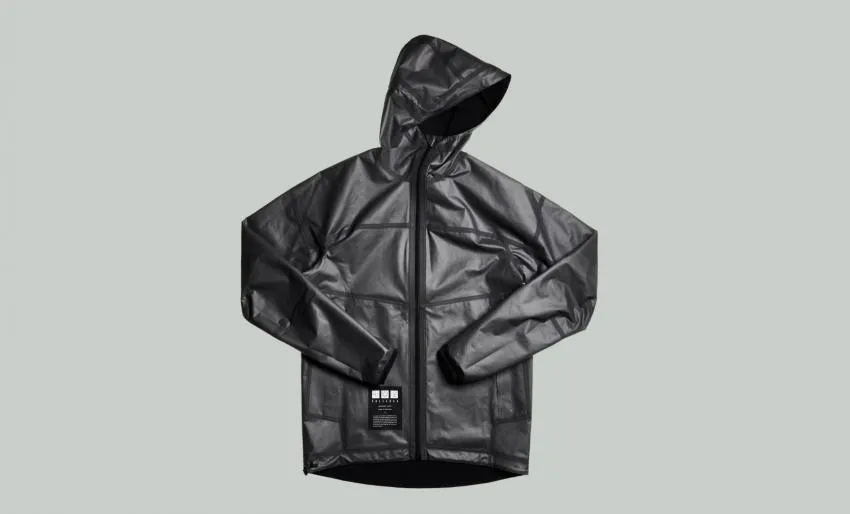
Just imagine wearing a jacket made of the lightest material to conduct your own body heat and equally distribute it all over the body. If 23% of Americans now travel during the winter, that is a lot of people traveling to find warmer weather.
Wearing a jacket like this one is enough to repel the winter blues. Many Americans get it during the winter. In other parts of the world, people wear several layers before finally finishing with a pair of pants and a coat. Wearing this type of jacket can help them stay even warmer while combating the winter blues.
Take a look at another smart shirt below that can help clear the body of free radicals and prevent MS.
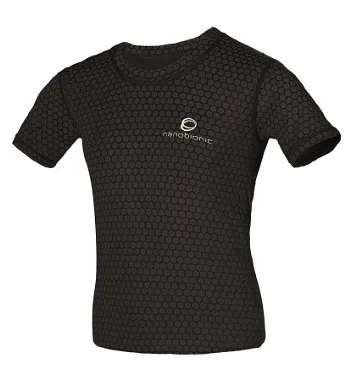
Wearing this smart shirt for just a few short hours a day will prevent oxidative stress and damage to our cells and prevent the disease of MS. Higher concentrations of oxidative stress create higher amounts of free radicals, which in turn contribute to disease. This smart shirt will eliminate this all from the body. This is great news considering how often MS affects people in today's world.
The National MS Society conducted a study recently with statistics showing that about 1 million people in the U.S. now have it. Owning a shirt like this one is invaluable to us all. Research on Nanobionic Clothing has proven beneficial to those in good health as well as those that already have free radical damage to their cells.
There are not too many commercialized products like this yet, but it is coming. Biomedical textiles will lead the way into integrating our medical needs into wearables while we sit at home without making many trips to the hospital. Until then read on about more innovative inventions the medical community has come up with so far.
Benefits Of Biomedical Textiles
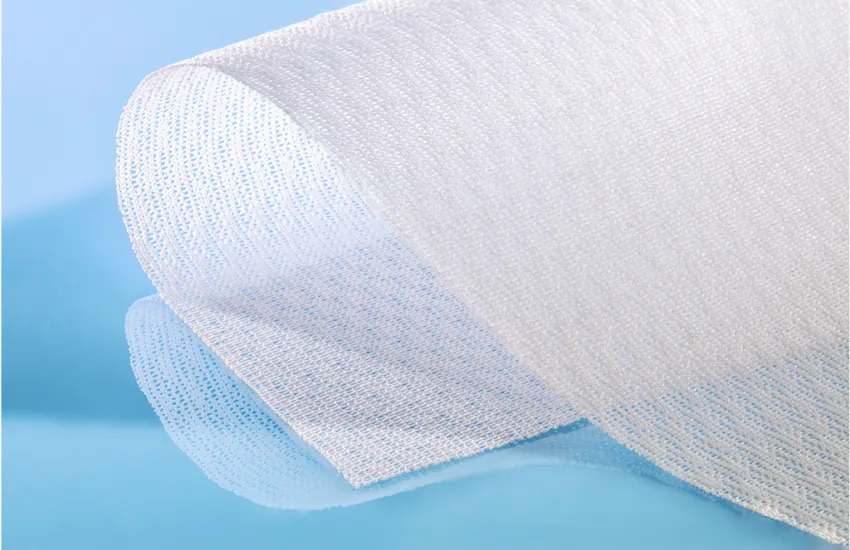
You've seen advertisements telling you you can repair tissues without harsh surgeries, but you may not have heard of the newly developed in situ coating on warp knitting. Research on warp knitting shows how vascular applications check how a heart may be doing during and after surgery and can prevent complications such as blood loss.
Further experimentation shows that situ tissue regeneration has a high chance of regenerating damage for those concerned with recovery. Biofunctional textiles are made with biopolymers and have many applications. They will be used for ingenious types of cosmeceuticals to help in the prevention of aging with the unique and new biopolymers inside the biofunctional textiles.
Other great uses for these textiles are for treatment of issues such as using antibiotics to treat infection, boost metabolisms, and release any other medicines needed to rejuvenate ourselves. Check out this journal done by the US National Library of Medicine on these creative ways to rejuvenate ourselves.
The choice is yours on how you apply your regenerative smart therapies. If you have questioned this giving yourself reasons why you will not need this, then here they are.
Here are four reasons why you don't need biomedical materials:
1. You Don't Want to Heal With Less Scarring
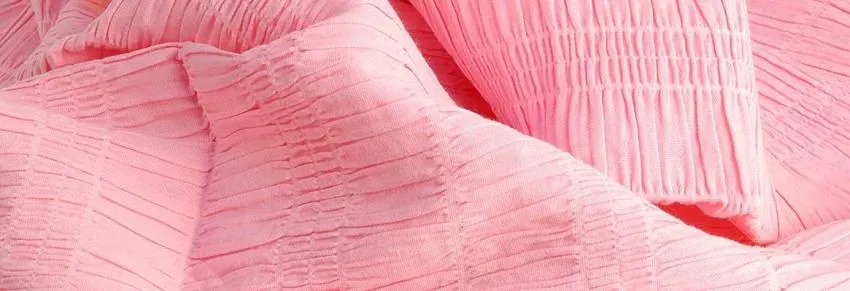
By not using biomedical textiles you may have severe itching and pain. Some pain will be worse than others depending on the scar, so imagine not having the problem, to begin with.
These materials give a better standard of living in that bio-materials will help in the regeneration of body parts that are damaged. When fibrin is combined for wound healing there will be fewer complications.
2. You Aren't Interested in Regenerative Textile Therapies
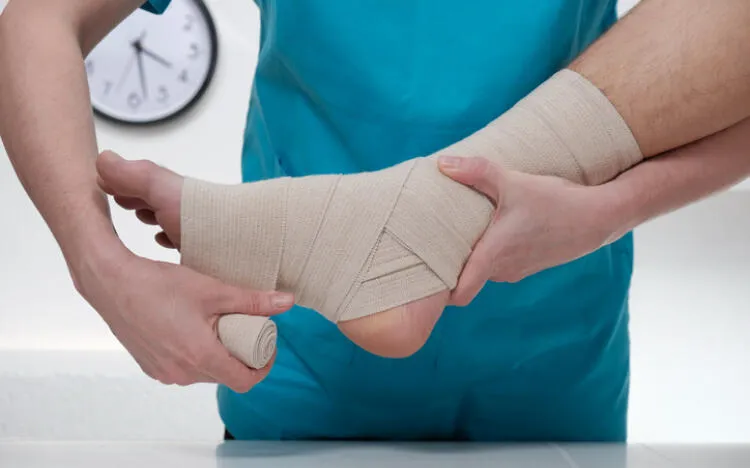
Why would you want to repair damaged tissues after surgery? Maybe because it would look like nothing was ever damaged, to begin with.
Electrospun nanofibers will work wonders for regenerative therapies when it aids scaffolding of tissues. These nanofibers offer progress in better water filtration, energy, and regenerative medicines.
3. You Think Wearable Electronics are Useless
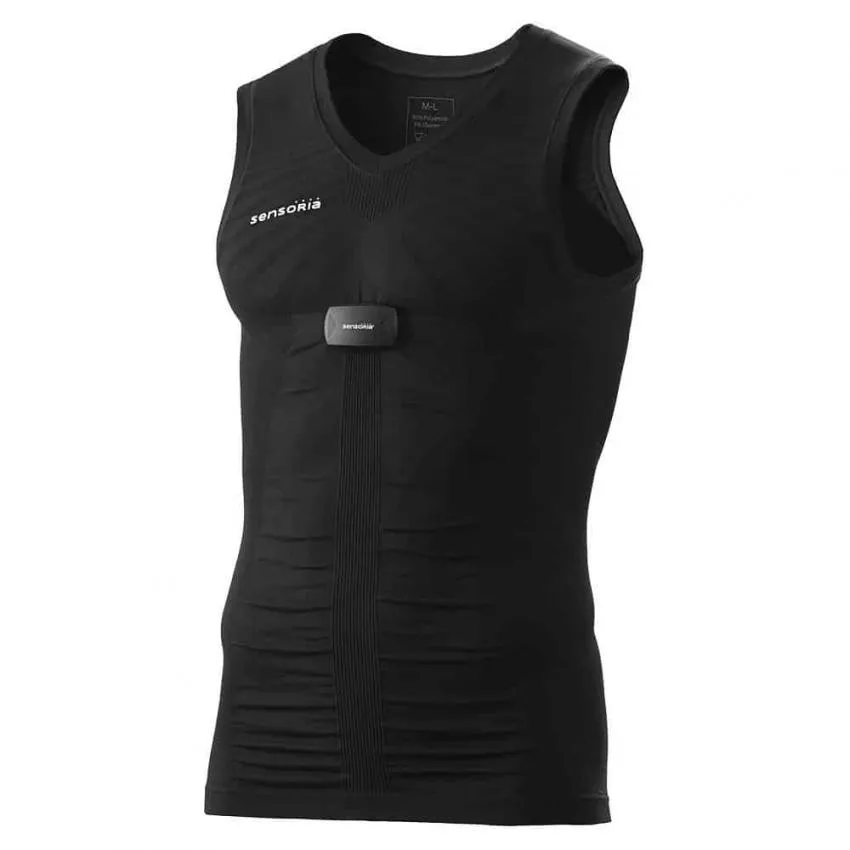
If you enjoy leaving your health vulnerable without early warning, then you won't mind leaving your life up to chance. Having a proactive health plan to improve your lifestyle will prevent any health risk concerns.
Biosensors will monitor the body throughout your day to help prevent any diseases from developing further along down the road.
4. You Enjoy Struggling Without Personalized Medicine
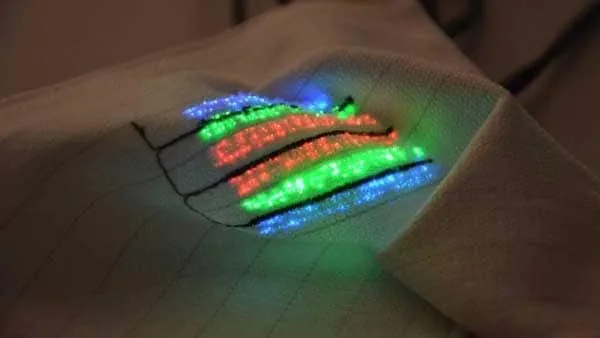
You don't need specific kinds of medicines to cater to your personal biology. We have been using that same kind of medicine for years what difference would it make? The difference is that therapies would be tailored for your own specific biology and have a better impact on your health.
Polymers will aid personalized medicine by carrying an individual's stem cells for the regeneration of tissues. We are at the dawn of innovative smart bio-materials commercialization. There are many uses smart polymers will have besides tissue engineering because of the many properties of how they react to internal and external stimuli.
After they respond to any stimulus such as heat, they can also go back to their normal state which is great for time-released medications. This new kind of therapeutic medicine will help heal specific tissues and diseases people may have when the drugs are released into the body.
Smart textiles have three main areas which are: smart clothing (textiles) wearable electronics(electrical engineering) and wearable computers aka information science. Although there are 3 main categories, they are all considered E-Textiles.
Smart Solutions Textiles Provide
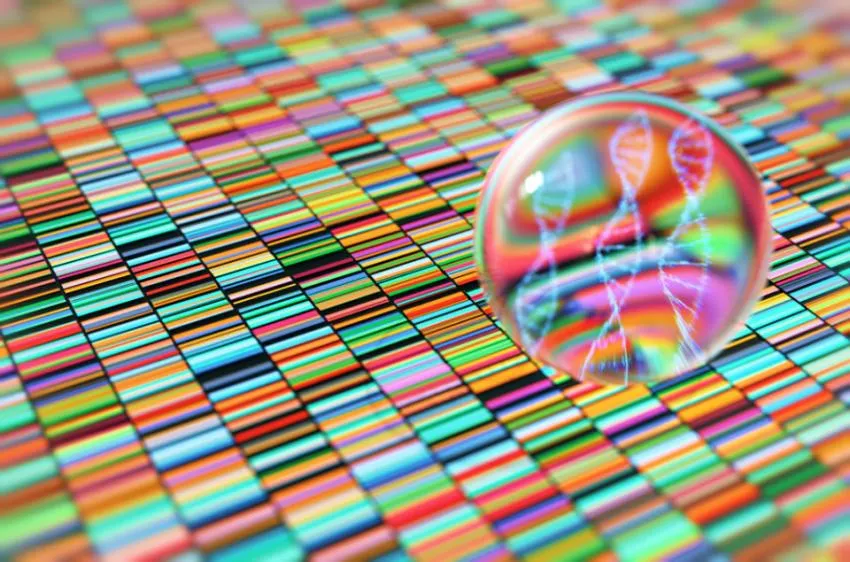
There will be new biomedical clothing while performing functions such as measuring vitals and wound treatments. One way medical smart clothing will adapt is in how its textiles will heal wounds, help regrow bone and cartilage, and even treat diabetic patients which have all been recorded in the interdisciplinary journal of research and innovations.
According to research, biotechnology will become an important aspect for the future of fashion, and integrate textiles for a new standard of living. A new standard of living is coming that will include biomedical clothes that help heal wounds and regenerate aging body parts such as cartilage and bone. This all helps prove people of all ages will most certainly benefit from smart clothes.
Although it is not mass-produced yet, Stanford Medical school has even shown in much of their experiments that smart bio-materials within smart textiles will be used in bone tissue and cartilage regeneration. Synthetic polymers are one of the most popular bio-materials that will be used in tissue regeneration, which respond the best to many different variables like temperature, P.H., and any other chemicals.
Although these materials are not in our everyday clothes of today, the good news is that with technological advancements, bio-materials will collaborate nicely with smart textiles as the market for this grows. A great market trend analysis is shown below to show the growth of biomaterials in the coming near future.
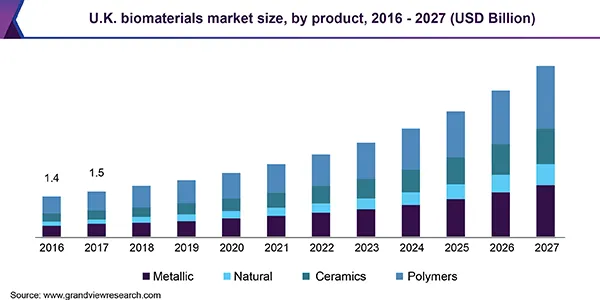
As reported by the journal of materials chemistry, graphene materials aid E-Textiles in multi-functionality and integration of sensors for better electrical properties. One of the more futuristic fashion brands out there is Cute circuit which has the latest in embedded smart fashion with LED lights shown below. The Fashion Forward artist Katy Perry has also worn Cute Circuit at the MET Gala shown below.
Wearable Tech And Smart Wear
Wearables range from clothing with sensors and embedded LEDs to smartwatches and head-mounted VR's. Take a look at this picture from a fashion show in Berlin representing the brand cute circuit. Embedded sensors in clothes that interact with LED lighting can be very beneficial in allowing customers more variety in style.
One pattern or color can turn into multiple ones to save money and for sustainability. The fashion of the future will be diverse for colors and materials, and there will also be new ways of creating fashions with 3-D printing.
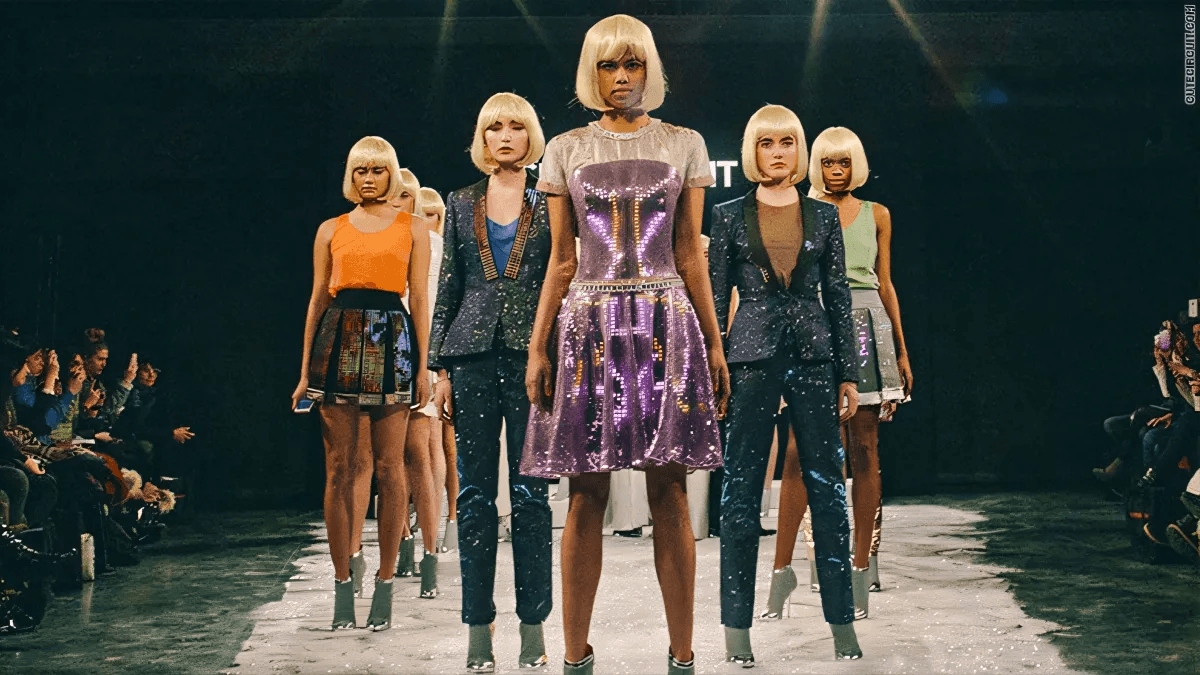
The fashion-forward graphene dress shows off its amazing properties because of its role as a fabric interface. 2019 was a good year in haptic research when the University of Plymouth did an interesting investigation on Testing done on the Dervish Sound Dress, which offered a unique experience in wearable tech created by engineers and programmers.
Better interaction with musical sounds was studied further in how users sense and engage with musical vibrations. Exciting times for clothes are coming because of how users will interact with them using their own bodies. Dr. Elias Alonso from the University of Exeter has even stated:
"This new research opens up the gateway for smart textiles to play a pivotal role in so many fields in the not so distant future. By weaving the graphene fibers into the fabric, we have created a new technique to all the full integration of electronics into textiles. The only limits from now are really within our own imagination."
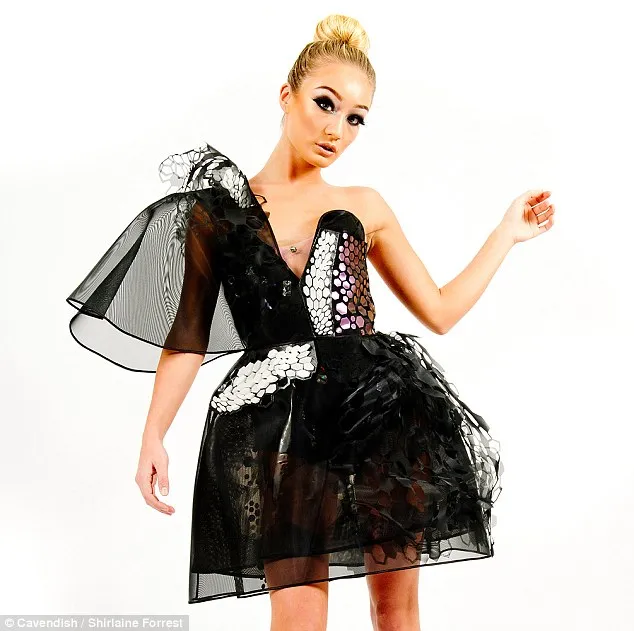
The Finest Use of Graphene Fabrics
The wonder material known as graphene has opened up different avenues for our clothes. Our fabrics will be much more functional as they interact with our bodies and protect us from the elements.
Check out the 9 versatile reasons you should be wearing graphene in wearable tech.
1. Wearable Tech In A Dress
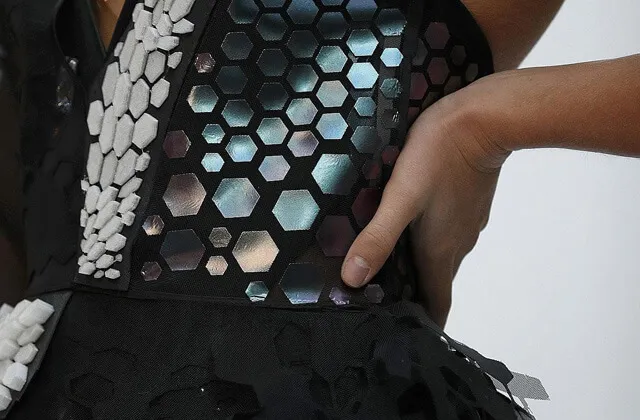
It is important to note that this dress was created as wearable tech but for the first time in a dress. A smart dress with graphene sensors and a microprocessor inside to show data.
Another word for the microprocessor is a CPU, but in a miniature form that performs programs through logic, arithmetic, and circuitry. It is needed to perform the tasks of any digital computer. This dress will also change colors that synchronize well with the breathing of any wearers.
2. Better Textiles For Vitals
Regarding better electrical conductivity, adaptive clothes enable smart textiles to work at their best in clothes. A user's vitals can be tracked with Sensors so that they can make sure their health is always at its best.
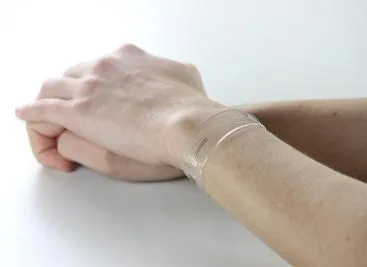
Heating textiles also work better with embedded graphene to prevent a chill and for better weather adapting. Body temperature can also be lowered in a hot climate as well.
3. Fire Resistant Coatings
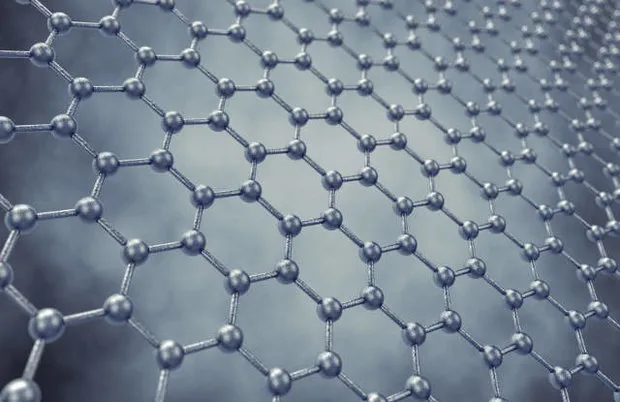
The issue of fire resistance is focused on graphene additives which are unique because of how it acts as an excellent barrier of gas and moves heat away from fires around.
It also slows down any flames that may still be burning. Nanocoatings are also combined with graphene structures for superior fireproofing.
4. The New Wonder Material for better performance

Graphene is a strong material that is one atom thick, and aids tattoo devices and other electronic sensors.
Vitals will be monitored with wearable tech combined with graphene and will help better athletic performance.
5. Growth of Sustainable Materials

Furthermore, sustainable materials will last longer and will improve the sustainability of many industries because fewer synthetic materials are needed when graphene is implemented.
Fewer carbon emissions will be emitted when created during manufacturing, and materials manufactured get a high voltage pulse. This pulse vaporizes any toxins leaving the carbon and transforming it into graphene sheets. Much greener manufacturing processes are a result of graphene along with 3D printers.
Nano inks are created in a micro supercapacitor manufacturing process at the University of Kansas recently that showed a better quality of printable electronics. They are also more sustainable after undergoing this process and it uses up less energy.
6. Versatility In Smart Clothes

Try a jacket with antibacterial properties that will keep your whole family safe from viruses. It also adapts to the environment and will adjust the temperature in this smart jacket, so you can be cooler or warmer depending on your preferences.
7. The Fabric Interface Of Graphene will act as DFI

Graphene will act as a DFI (digital fabric interface) for better conductivity of electricity. Columbia University researchers have found there is even more variety in the electronic state of graphene when different layers are combined. They created some interesting properties they had not seen before.
A new magnetism had been created and they say will be great in next-generation wearables. These wearables will analyze molecules of DNA, cholesterol, and glucose levels.
9. Next-Generation Wearables will monitor your health
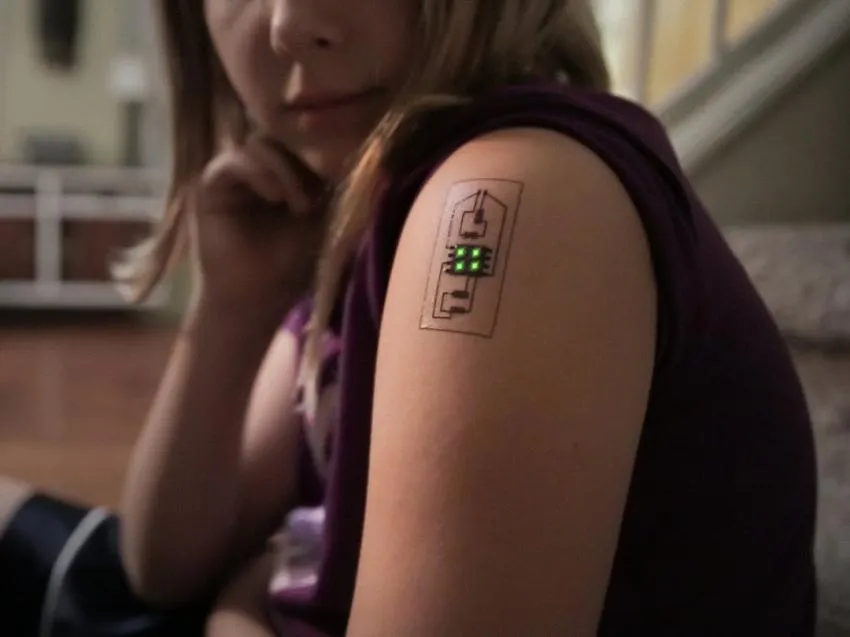
One recently designed electronic tattoo is made of graphene and will monitor our health, and can be applied using just water. Wearables will combine with flexible photonic crystals, creating even better smart sensors in the future.
According to research done by scientists, a combination of graphene sheets with polymer composites acted as a flame retardant and helped solidify their experiment in proving that this combination prevents the burning of materials. This experiment helps in determining how fabrics can also be fire resistant soon when embedded with graphene textile fibers.

According to research on various forms of Graphene, experiments involving the encapsulation of Graphene ink proved to have the most electrical conductivity on wool and cotton fabrics. The fibers did not get ruined in the wash and the structure of the fabric remained intact.
There was the question of whether moisture would be a problem during the athletic performance too but there isn't as long as Graphene ink is used to preserve fabrics while maintaining better conductivity.
Graphene materials in the textile industry will be big and are the best alternative to metal sensors embedded in other fabrics being manufactured. It will be used in nanotechnology inside microscopic polymer sensors instead of metal ones previously used to ensure a greener future for the environment.
Simply put AI will design new styles with advancements in smart materials like Graphene and e-textile fibers. There will also be embedded flexible circuits to collect sensory data. Conductivity of fabrics will be enhanced with Graphene ink and there will be better sustainability with biodegradable fabrics.
The graphene dress was created in a collaborative experiment with a cute circuit and scientists at the University of Manchester to show its many uses. The model wearing the dress gets breathing patterns captured while the bright LED lights are the result of its great conductivity abilities.
by experimenting on what graphene sheets can do when created for fashion, It will also change the way applications are used in everyday society as it interacts with the variety of smart clothes in the Internet of Things. Many experiments by different scientists have been done all over the world in different universities and research has shown how the internet of things will integrate everything digital with clothes.
Besides the graphene dress made known on the catwalk, there has been much research on how this material is multi-functional and can last longer than the average everyday clothes we are still used to. Public health will be in a better state with its many impressive properties such as heat conductivity, and promising graphene oxide for killing viruses.
Smart Textiles For Better Sustainability
Many new Clothing designers are leading the way in the new digitally enhanced fashion industry. wearable tech and smart textiles have their unique way of creating sustainable fabrics in mind for a better world.
Each designer has their own way of innovating for either performance-enhancing or telecommunication with smart technology embedded. Cute-Circuit is one of many with sensors that monitor the environment and body. It also allows users to better express themselves thru aesthetics, like LED lights within their silk K Dresses.
Cute Circuit's next video The Future of Fashion explains what they are all about and what they did to create Cute-Circuit.
There is a growing demand for better cost-effective ways when using digital 3D printing. Biodegradable fibers such as silks, cotton, linens, wool, and rayon will be used for better sustainability. According to a marketing intelligence firm called Morder, trends in smart fabrics are expected to grow 31% between the years 2021-2026.
Our everyday use of electronics is always increasing and will continue to as time goes on. The integration of clothes with our devices will be even more in demand for smart fabrics as well. The internet of things is coming and when sensors and mini processors inside our clothes communicate with it, it will be an everyday reality.
3D printing causes less carbon dioxide emissions, helps in creating easily repairable materials for less waste, and 50% lighter fabrics are created that prevent too much waste production. Many 3D printers also work hand in hand with biodegradable fibers with smart textiles.
Fabrics created by Ohio State University experimented on how the antenna inside them will act the same as sensors embedded in other clothes. These new smart materials will save and collect data, as well as send out information tying in nicely with the Internet Of Things. Research has shown the digital age keeps progressing and will integrate many technologies.
Remodeling And AI
In 2019 the fashion industry was worth 2.4 trillion worldwide, but after the hardship of covid 19, it has taken some hits. Here is a video that talks about the requirements of modeling and how Ms. Khare talks of how diversity is good for the industry. There is also a valid point of how height does not need to be an issue as the fashion industry adapts to changes in the digital industry.
As the fashion industry gets remodeled, with the help of AI systems, there is no room for the look of models to only be really tall or really young. Genetic engineering will help reengineer problems of aging so that models can rejuvenate themselves.
Project 21 was created by the Sens Foundation and co-founded by Dr. Aubrey De Grey, a pioneer in the fight against aging. Project 21 began in 2016 to help commercialize anti-aging therapies to the public one day. His book Ending Aging has shown that Rejuvenation technologies through biotech will truly be an amazing sci-fi reality come to life.
models will be able to represent all kinds of sizes with the help of new additive manufacturing that will help in custom-made fabrics. Here is how fashion is today but read on to find out how modeling can change for the better through the use of AI.
Although Michelle Khare is 5'2" she amazingly showcases how well she could walk and act high fashion in this video made in 2019. Although she is not showcasing smart textiles she is explaining the need for designers to show more diversity in fashion shows.
One fashion expert explains to her why high fashion clothes are cut according to a certain standard. The prototype is expected to be a certain size and sent to places like New York for models to wear.
A modeling agency based in London called Anti-Agency encourages models who do not fit a typical mold of what is expected. They exhibit extremely original and creative models who are not the usual size or height that is expected. They are just one example of unconventional modeling that has already started to help change the industry.
She does however tell Michelle that it is a matter of time for those that are persistent that will help change some of the strict rules such as height requirements and size.
She does also mention that fashion designers are starting to show models that are shorter and more diverse. With the help of AI, the modeling industry will change the typical stereotype of what modeling is as well.
Here are 5 ways AI will change the modeling industry:
1. New AI Customized Mass Production
As models become more diverse so will the clothes through the use of electronic knitting machines, digital prints, laser cutting and etching, and digital stitch. These new techniques will offer more variety in mass production of different sizes and preferences that consumers prefer.
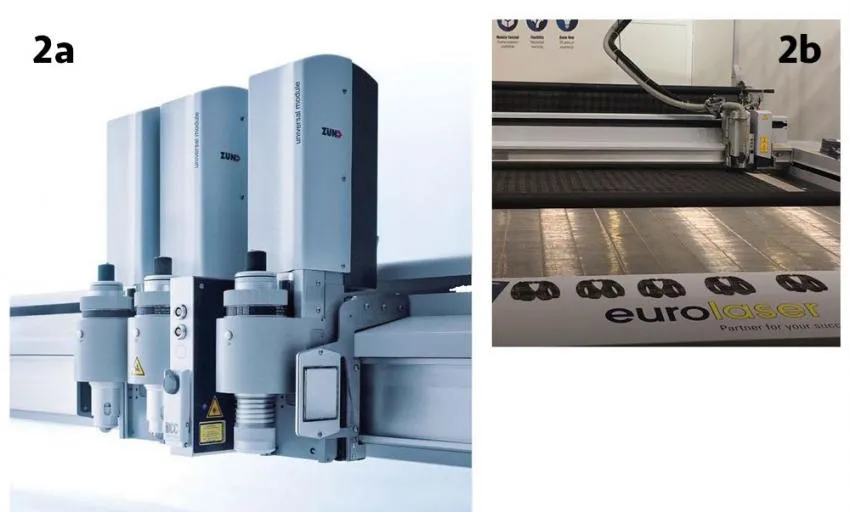
Many shoppers especially Millennials, have a big preference for individualized clothes tailored to fit their size. There is a prejudice towards models past a certain age that needs to be fixed to adapt to advancements in society that are coming.
2. Touch Screen Fabrics to embed technology in clothing
These smart fabrics can even be used for everyday clothing adding to its versatility. There can be many options in interacting with different devices and apps for wearers.
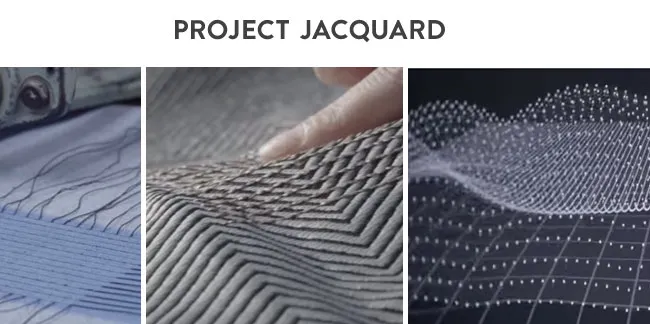
Project Jacquard was created for the better integration of smart wear and devices and is a technology made for denim enabling interaction with applications. Sensors and devices of all kinds to be embedded within our everyday comfortable denim.
3. Rejuvenation Clinics with gene therapies and rejuvenation technologies
Rejuvenation clinics with gene therapies and rejuvenation technologies will bring the topic of aging to the forefront in advertising. Biotechnologies are advancing and companies such as Bioviva are leading the way by starting the first rejuvenation clinic in Fiji.
Using Models of all ages will eventually make great sense in advertising campaigns especially since it is no longer needed to only have young teenagers.

If people can become younger more options and availability in jobs will create better economies. Obviously, models will have more options in life and won't be cast m aside once they are older. Models representing rejuvenation clinics could certainly make a good living representing youth-enhancing therapies.
4. AI Body Scanning to measure body sizes before production
There will be a growing demand in the market for mass customization in fashion according to analytics. Body sizing scanners will measure body sizes and a model's measurements will be sent to retailers for any sized customer.
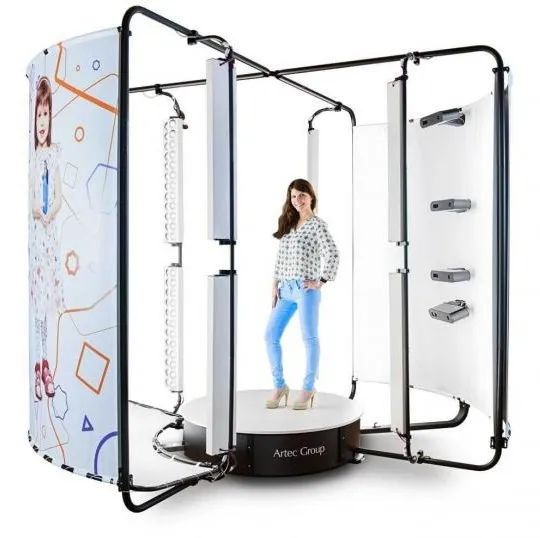
We are living in an age where technology is changing and evolving every year with new sensors linked out to wireless networks all around us. It is sooner rather than later that the IoT will connect devices with our clothes as they adapt into new kinds of designs.
5. Virtual Fitting Rooms

Using a virtual trying room in an app will help a machine learning system within it customize to a wearer's specific measurements. MobiDev is one such app that can already help us personalize our wardrobe. The strict rules such as certain height requirements are starting to change in the modeling world.
With the help of AI Programs and Apps, machine learning systems could scan faces and proportions to place models in specific agencies that want their particular look and talent. Many young women are turned away from agencies each year and with the help of AI, they can be placed in the right agency with less time wasted on both sides.
New Industrialized AI
Artificial Intelligence plays a large role in this new industrial 4.0 revolution causing major growth for our economy. New industries will open up with the help of Additive manufacturing and 3-D printing.
Great solutions for creating products more quickly with better quality and lower costs. They are part of the new way of smart manufacturing with better production methods.
They also have a big role in the internet of things in that they will be connected to the cloud to track all data along with analytics and designs. Much innovation gets created more quickly with less waste.
The IoT is key in the successful creation of technologies of The fourth industrial revolution to shape society for the better. Check out this video below on our growing industries with the internet of things, and how society is going to change for the better.
3D printing will replace parts of synthetic materials normally used in the everyday fashion world for better sustainability. Landfills will be full of clothes that are biodegradable which will be better for the environment.
The different manufacturing processes with 3D printing will utilize sustainable fashion techniques. It will also make geometric materials never seen before while making production easier and faster by taking the place of sewing, cutting, and gluing.
Using this printing technique will build better fashion templates that will add to better creativity for designers and sales will go up in this new industry 4.0. Here are creating new ways our the fashion industry will produce less pollution.
Take a look at this 3D printed wearable skirt that can be made to perfectly customize to any individual's body. Fashion designer Julia Daviy creates biodegradable fabrics to support zero waste and a greener society with 3D printing. Check out one of her creations below to see how fashion is evolving.

Here are ways 3D printing is evolving the fashion industry:
1. 3-D Printing Aids in Manufacturing
3-D Printing will aid the smart manufacturing of clothes. The Manufacturing process of complex parts will be done more easily than the usual machines that are involved. It Reduces waste and uses polymers, wax, and nylon with recycled plastics.
2. All Body Types Fit Flexible Materials
There will be more flexible materials with sensors that help the wearer adapt to their environment.
3. Eco-friendly products for fewer landfills
These products will use poly-terra for the eco-friendly printing of materials. It is a filament made out of organic minerals.
4. Green manufacturing For Premier Energy
Less of our natural resources are used in production and materials get recycled along with less greenhouse gas emissions. Use geothermal energy to access electricity.
5. Multicolored 3-D Printing
This includes multiple materials knitted together in an intricate and artistically appealing way for elaborate designs of color all in one garment. A great example is the oscillation 3D printed dress.
The geometric patterns stand out stunningly with the different scaling of colors. When it is combined with varying types of 3D printed materials there is a newer and more unique fashion statement.
Computer Generated Garments
The fashion industry has also started creating computer-generated clothes that can get put on any user's online photo. This is a new trend in what is being called digital fashion. One designer brand called The Fabricant is very confident this will sell well with the public.
The founder Kerry Murphy has even quoted: "I truly believe we are going to be the first billion-dollar digital fashion company." This high fashion brand creates 3-D designs for brands such as Tommy Hilfiger, and models do 3-D body scans that aid in designing clothes from a digital image.
They are also known for making the world's first block-chain dress called Iridescence. It was dubbed "Worlds First Digital Couture" and sold for 95000 USD. The brand Carlings is also a digital-only clothing company and has showcased the first augmented reality graphic T-shirt.
The graphic design on the shirt allows users to change the graphics using their smartphones. Having digital clothes addresses an issue called climate crisis because there is no issue of consumers wearing anything that is not biodegradable. Here is a video below on how the Clothing company Carlings created a digital-only clothing line.
Dress by The Fabricant: Iridescence
View this post on Instagram
Thought Couture by the Fabricant for sustainable fashion.
View this post on Instagram
Even the gaming industry has recently collaborated with high fashion for what players call skins. The designer Louis Vuitton and Riot Games have created these outfits for the popular League of Legends. In addition to this players will dress up their avatars with digital clothes they pay for online.
According to research skins are used so users can play at their peak performance. Skins are graphic downloads for gamers to change the look of their character and they are only for aesthetic purposes. Gamer's are willing to pay big money for this virtual wear in the digital entertainment industry. The global market is expected to reach 272 billion by 2022.
